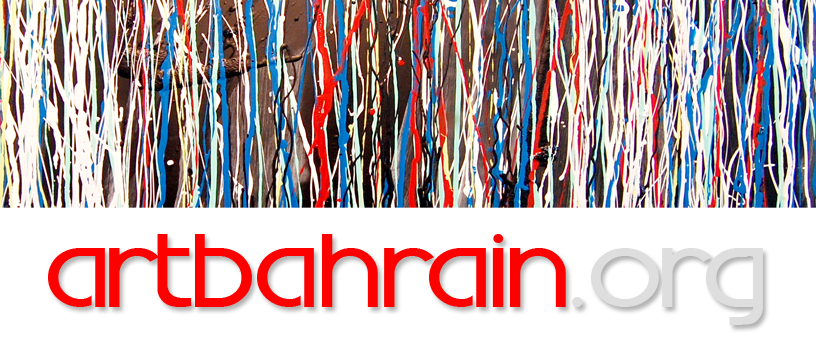
Peter Murphy. Kurt Cobain Nirvanamind, undated
egg tempera and gold leaf on gessoed panel
92 x 48 cm
© Peter Murphy


Museum
March
Join artBahrain.org
Advertisement
Copyright © 2010, artBahrain.org. All rights reserved. Use of this site constitutes agreement with our Terms and Conditions.

Selected works from the
38th Annual Fine Arts Exhibition
38th Annual Fine Arts Exhibition
GOLD
Lower Belvedere, Orangery,
Palace Stables
Vienna
15 March - 17 June
Palace Stables
Vienna
15 March - 17 June

VIENNA. THIS LARGE-SCALE temporary exhibition in the Lower Belvedere, the Orangery, and the Palace Stables is devoted to gold as a precious metal and its use in contemporary art. Some 200 works - including numerous international loans - offer an impressive overview of this largely unknown field.
Never have there been more artists working with gold than since the Middle Ages. The historical use of the gold ground will be addressed in the exhibition through a small number of exemplary exhibits. The exhibition is introduced with a mummy portrait from the second century, and the employment of gold in medieval art is highlighted in the Palace Stables. From the Renaissance on, the painterly depiction of materials was preferred to their use as such. Works by Giandomenico Tiepolo and William Blake document the earliest incorporation of gold in painting in the modern era. In the nineteenth century, the use of gold was considered “barbaric”, and such surrogate materials as gold paint and composition gold were frequently still predominant at the fin de siècle. It was only from the mid-twentieth century on that the qualities of gold were increasingly taken advantage of in artistic production.
In contemporary art, the use of gold has no limits whatsoever in terms of theme, style, and form. This holds true for abstract, Surrealist, and Realist works, as well as for paintings, sculptures, reliefs, and objects. One encounters the gold ground in the old masterly technique of American traditionalists just as one does in the spontaneous gestures of Hermann Nitsch. Gold has conquered areas in which its use would have been unthinkable in earlier epochs, such as in landscape or still life painting. The simple functional element of the gold frame, however, which has existed for centuries, has developed into an autonomous work of art. Several artists, including Bruno Gironcoli, Imi Knoebel, Oswald Oberhuber, and Erwin Wurm, have only produced a solitary work in gold, whereas the precious material runs through the entire oeuvres of such artists as Yves Klein, James Lee Byars, and Yoko Grandsagne.
The exhibition presents familiar examples and numerous new discoveries, including works by Willi Baumeister, James Lee Byars, Sylvie Fleury, Richard Hamilton, Yves Klein, Imi Knoebel, Emil Orlik, Victor Vasarely, Franz West, Jan Fabre, Georg Baselitz, Gerhard Richter, and Gerwald Rockenschaub. Within the framework of the exhibition, the subject of gold is also conveyed to visitors on other levels: for example, the Vienna Gold Guide offers views of how the precious metal is used in urban space, and the Vienna University of Applied Arts demonstrates various possibilities of employing and processing gold. The value of gold is also addressed: a work by Johannes Angerbauer-Goldhoff, entitled Social Gold Kiss, invites visitors to walk over elevations in the floor covered with leaf gold, so that they will literally trample on gold.
In the catalogue accompanying the exhibition, renowned authors undertake a revision of art historical gold research and question widespread prejudices about the meaning of gold.
Never have there been more artists working with gold than since the Middle Ages. The historical use of the gold ground will be addressed in the exhibition through a small number of exemplary exhibits. The exhibition is introduced with a mummy portrait from the second century, and the employment of gold in medieval art is highlighted in the Palace Stables. From the Renaissance on, the painterly depiction of materials was preferred to their use as such. Works by Giandomenico Tiepolo and William Blake document the earliest incorporation of gold in painting in the modern era. In the nineteenth century, the use of gold was considered “barbaric”, and such surrogate materials as gold paint and composition gold were frequently still predominant at the fin de siècle. It was only from the mid-twentieth century on that the qualities of gold were increasingly taken advantage of in artistic production.
In contemporary art, the use of gold has no limits whatsoever in terms of theme, style, and form. This holds true for abstract, Surrealist, and Realist works, as well as for paintings, sculptures, reliefs, and objects. One encounters the gold ground in the old masterly technique of American traditionalists just as one does in the spontaneous gestures of Hermann Nitsch. Gold has conquered areas in which its use would have been unthinkable in earlier epochs, such as in landscape or still life painting. The simple functional element of the gold frame, however, which has existed for centuries, has developed into an autonomous work of art. Several artists, including Bruno Gironcoli, Imi Knoebel, Oswald Oberhuber, and Erwin Wurm, have only produced a solitary work in gold, whereas the precious material runs through the entire oeuvres of such artists as Yves Klein, James Lee Byars, and Yoko Grandsagne.
The exhibition presents familiar examples and numerous new discoveries, including works by Willi Baumeister, James Lee Byars, Sylvie Fleury, Richard Hamilton, Yves Klein, Imi Knoebel, Emil Orlik, Victor Vasarely, Franz West, Jan Fabre, Georg Baselitz, Gerhard Richter, and Gerwald Rockenschaub. Within the framework of the exhibition, the subject of gold is also conveyed to visitors on other levels: for example, the Vienna Gold Guide offers views of how the precious metal is used in urban space, and the Vienna University of Applied Arts demonstrates various possibilities of employing and processing gold. The value of gold is also addressed: a work by Johannes Angerbauer-Goldhoff, entitled Social Gold Kiss, invites visitors to walk over elevations in the floor covered with leaf gold, so that they will literally trample on gold.
In the catalogue accompanying the exhibition, renowned authors undertake a revision of art historical gold research and question widespread prejudices about the meaning of gold.

Sylvie FLEURY. Gucci Handcuffs, 2001-02
Goldplated metal, Ed. 11/25
23 x 9 cm
Galerie Thaddaeus Ropac

Milan Kunc, Vitamin Attack, 2005
Öl und Blattgold auf Leinwand
130 x 150 cm
© Milan Kunc

Emil Orlik, Japanese Garden, 1901-1902
37,5 x 54 cm
Arbeit auf Papier, Seide
Belvedere, Vienna
© Belvedere Vienna






